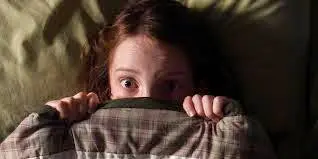While the majority of children are diaper-free by age 3, 20 percent of all children still have issues with night-time bed wetting at the age of 5. Night-time bed wetting in children over the age of 3 is usually a result of poor bladder control, a small bladder, or an internal need-to-pee signal that is too weak to wake up the child. All the above make bed wetting a common and perfectly normal issue in younger children, even though it can be frustrating for parents. Luckily, like most frustrating yet common bedtime problems, bed-wetting frequency and hassle can be reduced with a simple routine.
The following bedtime routine checklist provides an example of how to start the night to increase the chances of a dry morning:
Establish a routine. Many bedtime routines for 3- to 5-years-olds begin with calming activities, such as a bath, story, or short cartoon. It may take some experimenting to find what works best for your child. What’s important is to establish a routine and stick to it. Start bedtime things at the same time every night and follow the same steps to help your child’s internal clock learn when it’s time to pee and when it isn’t.
Try to avoid fluids later in the day. If you have a child that’s struggling with bed-wetting issues, try to make sure your bedtime routine doesn’t involve water or other fluids close to bed time. Often avoiding liquids an hour or so before bed is plenty.
Prepare for the worst. While your child is brushing their teeth and preparing for bed time, it’s a good idea to prepare the bed. A simple plastic mattress cover and having an extra set of sheets and pajamas for nighttime accidents nearby can make things run far smoother. Work out an accident plan with your child so that they know what to do if they pee the bed. Older children may even be able to clean up themselves without waking you. This can reduce guilt, as they don’t have to wake everyone up and make a big deal out of their accident.
Make the toilet the last stop. The final stop in a bed-time routine for a bed wetter is the toilet. A potty break should occur immediately before climbing into bed. You might even consider ‘double voiding.’ This is a practice where you have your child go to the bathroom not once, but twice before bed. For instance, you might have them go at the start of your bed-time routine and the end.
Inform and reward. Outside of augmenting your bedtime routine, it’s also a good idea to talk with your child about bed wetting. Be sure they understand that bed wetting is common and is not their fault. Offer rewards for dry nights and avoid punishing not-so-dry nights.
With the proper preparation and routine, bed wetting can be reduced, and when it does occur, it can be less of a hassle and less of a mess for both parent and child. If you have continued problems you might consider a potty alarm for bed time. Above all, don’t get discouraged. Remember — this too shall pass — but if it doesn’t by age 6 or 7 or your child is complaining of lower abdominal pain, there’s no harm in reaching out to your pediatrician.



 Yep, gender realization is the next step in sexual development beyond
Yep, gender realization is the next step in sexual development beyond